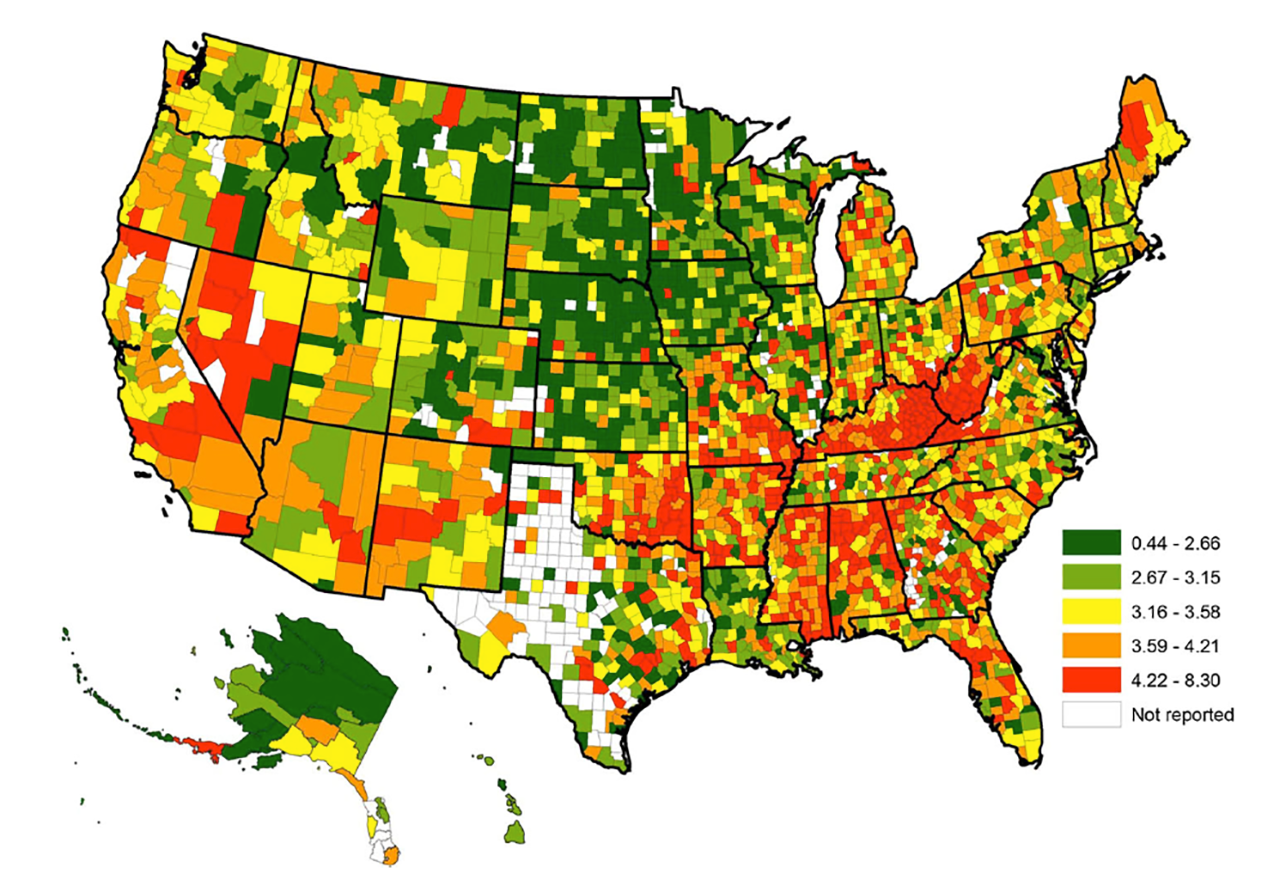
Penn State professor, Stephan Goetz, performed a study to try and figure out where the least happy communities were located throughout America. The study took into consideration the number of poor mental health days reported per county. The distinction of what constituted a "poor mental health day" was derived by the number of days people expressed they were in a negative mood.
The least happy locations are colored orange, while the most happy are indicated in green. The results were gathered via phone survey using a Behavioral Risk Factor Surveillance System. To help prevent skewed results, the averages were derived by taking data from 2002 to 2008 (before the recession).
Goetz believes there is a noticeable difference in counties that had more closely-knit communities. These locations tend to be smaller, with the ability for people to change homes less often, and commute less frequently. Goetz believes people living in this type of environment are likely to have a higher level of "social capital." Furthermore, there is generally less crime in these areas than in major metropolitan cities. Overall, this might explain why the parts of his happiness map with the most green are located in the Midwestern states, where there are typically less people, resulting in less traffic and close-knit communities.
Goetz went on to suggest that suburbanites can have the best of both worlds. Mainly because they are able to live outside of the chaos, hustle, and bustle of the inner-city. Yet, they are close enough near the city limits to venture partake in the lifestyle at their own discretion.
At the end of the day, there are many factors that can contribute to happiness. Goetz's believes unhappy people are usually less productive. His study attempts to understand, on a county-wide level, where people feel the least happy, and perhaps the factors which drive these emotions. The idea is to identify the cause of our negativity in order to counteract these issues to become a happier and more productive society.
What are your thoughts on the survey? What other factors do you think might play a role in our happiness that weren't discussed? Please leave your thoughts and let us know how you feel.




